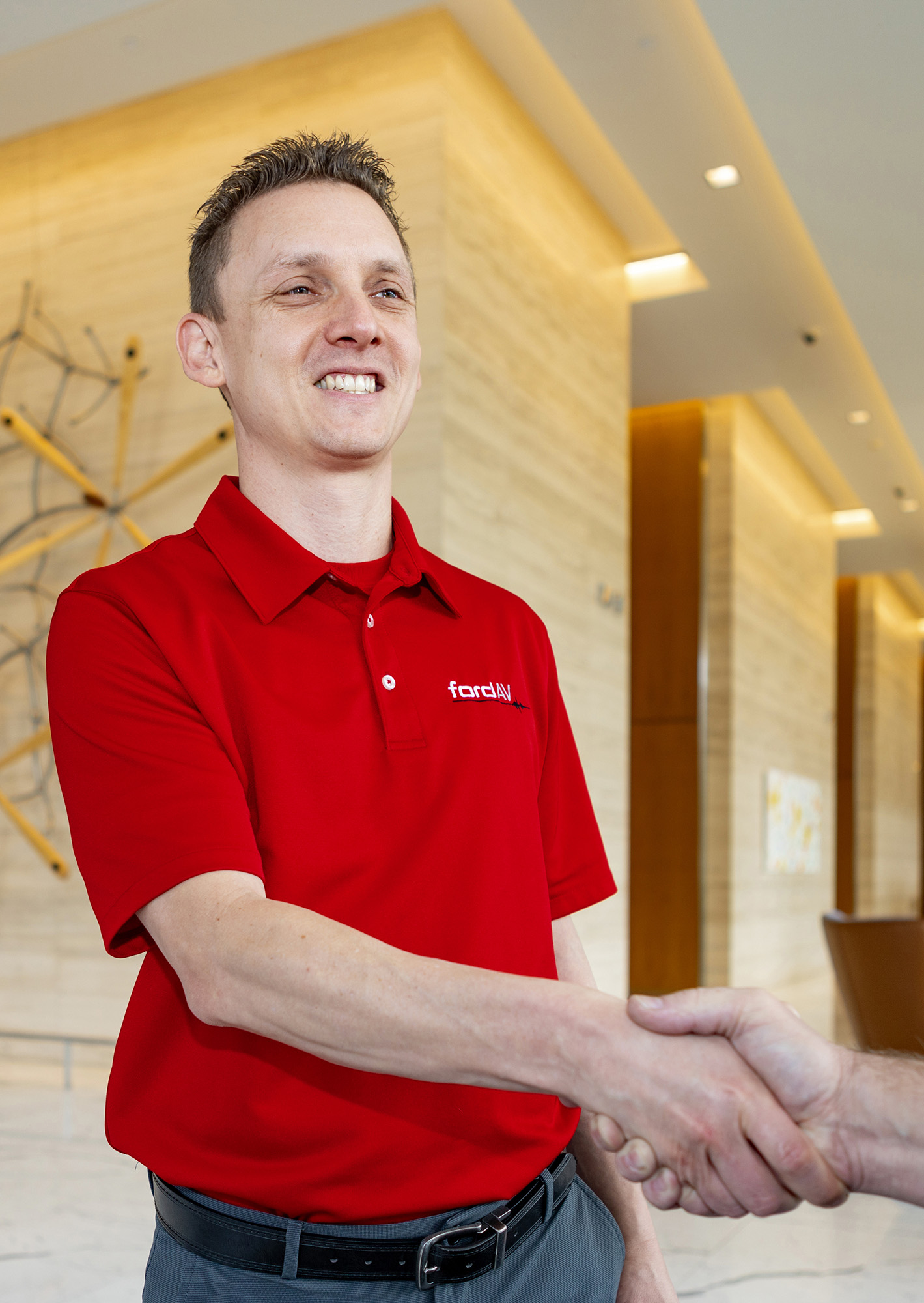When considering how new teaching methods impact the AV technology used in classrooms or other learning environments, it’s helpful to focus on why the technology needs to be used to communicate the material in the first place. First, knowing the why helps bring the value of using technology into focus. Second, knowing why helps facilitate how teaching committees plan to implement technology into their course curriculum. There are three elements that illustrate how AV technology ensures the best learning outcomes in today’s educational institutions: Content, Collaboration, and Control.

Content: Clear, Consistent Communication
The first element is clearly communicating course content to students, and it’s one of the most fundamental requirements of learning today. Since students have grown accustomed to seeing teaching material displayed on a projector or multiple displays around the room, distributing content within a space using AV technology becomes paramount.
That’s the why behind Crestron’s focus on content. Some of the methods for content distribution include using DM® Essentials based on HDBaseT® connectivity over twisted pair wiring with a few improvements. Another method is to use AV-over-IP distribution to send the same audio, video, USB, and control signals on the network, like the DM NVX® technology series. A third way is to send video and audio content wirelessly using Crestron’s AirMedia® wireless presentation and conferencing systems. With any of these platforms, instructors can connect their sources easily, communicate their materials to their students anywhere in the classroom, and be confident that the learning environment reflects how students learn today.

Collaboration: Connecting Everyone, Everywhere
A second aspect of the most modern teaching pedagogies is collaboration. Hybrid and hyflex learning spaces with a mix of in-person and remote students demand AV technology, which follows the natural flow of conversation. Effective learning cannot be accomplished unless everyone is heard and seen clearly, allowing for real collaboration between students in or out of the classroom. There are natural movements that people make when collaborating. For example, the instructor or in-person students don’t always face the same direction. They might switch between addressing or responding to different people in the classroom or remote participants on a monitor.
Crestron’s Automate VX multi-camera speaker tracking solution utilizes artificial intelligence for multi-camera intelligent switching, including Visual AI or Visual AI Direction, to unlock true collaboration for everyone involved. Without human intervention, this technology allows the system to switch to another camera when the person speaking looks in another direction (rather than only showing the side of the speaker’s face). One of the quickest ways to make remote learners feel disconnected is by providing an experience where the instructor and the in-person students never seem to look at them.
The software in the Automate VX works with Crestron’s 1 Beyond cameras by detecting faces and angles of facial features, while not recognizing or identifying specific people. It is the only solution of its kind, with multiple optical zoom cameras and third-party microphones, offering automatic switching based on face direction.

Control: Simplifying the Learning Experience
The third element of why using AV technology ensures the best learning outcomes revolves around two teaching or learning styles: Active Learning and Experiential Learning. In these two methodologies, control ties the technology together with the learning. In Active Learning spaces, the instructor may want to send their content to all group tables while explaining the parameters of a group assignment. Then, the small groups would send a local source from one student in the group to a display at or near the group worktable or station. The most successful outcomes of Active Learning happen when one or several students “teach” other small group members the material, thereby helping to contextualize and reinforce recall of the material in their own minds. But control from the lectern or at the group worktables is essential for simplifying and automating the functions of the system.
In Experiential Learning, applications such as medical simulation labs require control of microphones and speakers, routing video signals from the control room into the lab space, control of PTZ cameras to observe what is going on, control of recording devices, etc., all to create a more user-friendly system for non-technical educators. In nursing or EMT training labs, a trainer will want to tell students how to safely move a patient or listen to the questions a student asks in an exam room. In an esports lab, a coach needs to route a player’s video to displays around the space to help other players understand a team’s strategy or what issues to avoid during the next competition. Any of these examples live or die by how the AV technology can be controlled, which is where Crestron 4-Series® control processors excel.

Campus-Wide AV Management
One last example of the importance of control in modern learning is using technology operations software to remotely control, maintain, and support all the content, collaboration, and control technology used in multiple buildings by the whole institution or across the campus. The XiO Cloud® platform puts the power into the hands of the support teams to confirm that all systems are ready to enhance teaching rather than become obstacles to learning. XiO Cloud platform software enables support teams to deploy, manage, monitor, and evolve the technology used in teaching quickly and efficiently. With this tool, the user can view the online or offline status of the technology, check room health, review the status and settings of the technology before the class begins, and get alerts if any issues arise. Further, technology firmware and software updates can be scheduled, usage of spaces can be tracked, and systems can be set to maintenance mode when being serviced. Additionally, historical data, metrics, and dashboards can provide institution-wide insights on how the technology is being integrated into teaching by the faculty members.
AV technology significantly impacts the success of new teaching methods. It plays a key role in both implementing new pedagogical advancements and why there is value in using the technology in all types of learning environments. It ensures faculty can thoughtfully weave together their course materials with the technology required to communicate with their students. When teaching committees are discussing the most impactful ways for students to absorb information, they will want to understand why it is so valuable to focus on content, collaboration, and control.
Partner with America’s Leading AV Technology Company

- 50+ Years of Experience – Designing and integrating innovative audiovisual systems for organizations across multiple industries.
- Nationwide AV Services – Local teams supported by a national network for dependable AV installation, maintenance, and ongoing support.
- Comprehensive Expertise – From collaboration rooms and video conferencing systems to digital signage, enterprise control systems, and managed AV services.
- Scalable, Future-Ready Solutions – Engineered for reliability, flexibility, and seamless user experiences.
- Proven Performance – Trusted by Fortune 500 companies, universities, government agencies, houses of worship, and more.
Ready to connect with Ford AV professionals? Fill out the form below to transform your space with expertly designed and integrated AV technology.






